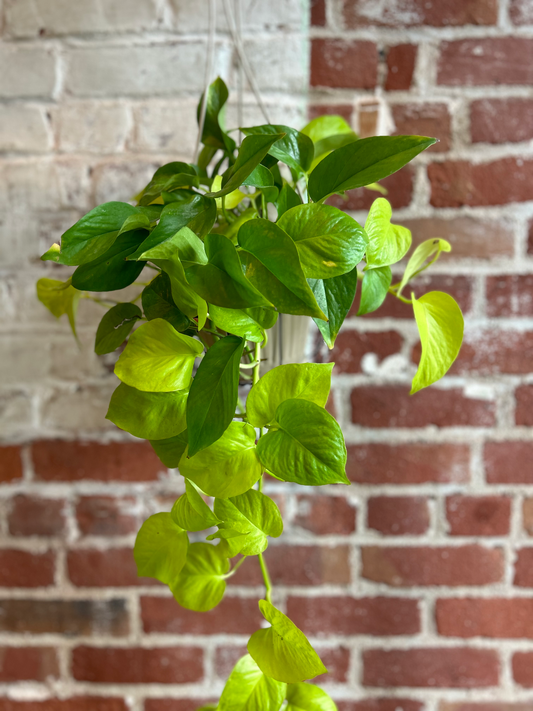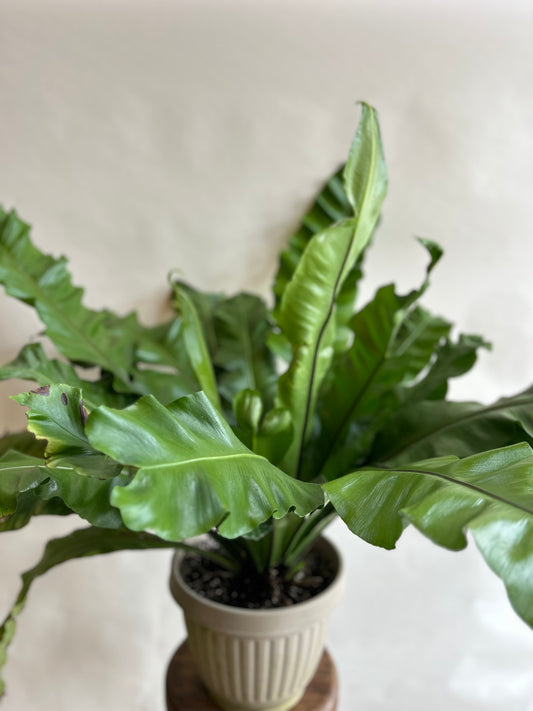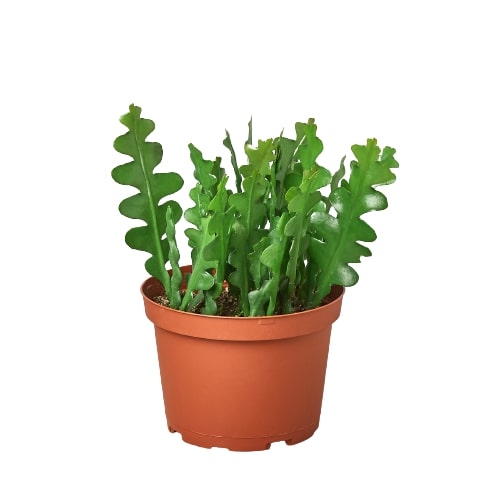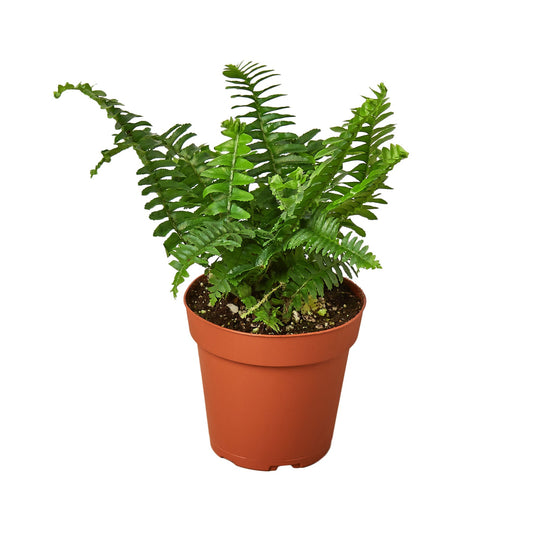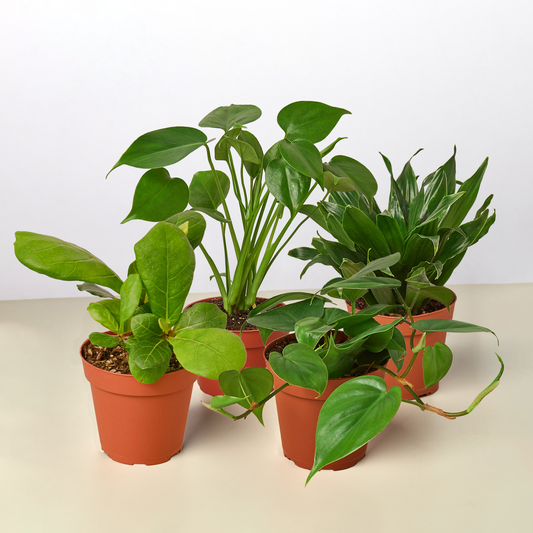What To Do With Your Schefflera Node
Cafe Planta Team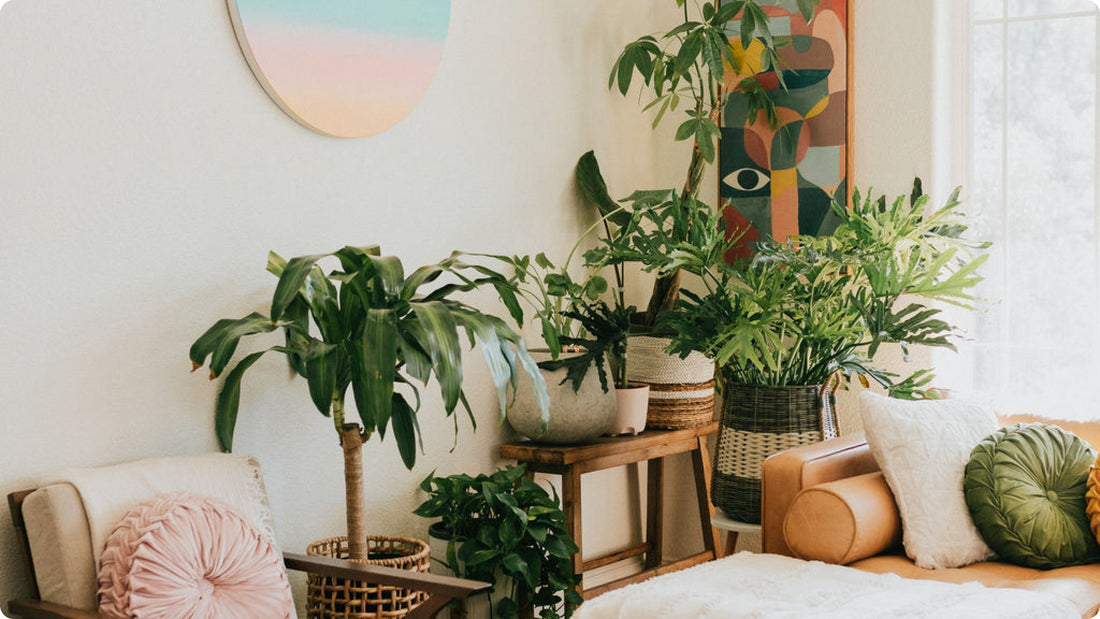
Ah, the Schefflera! Known for its lush foliage and easy-going nature, this plant can make any room feel like a tropical escape. But what happens when you find yourself staring at a Schefflera node and wondering what to do next? Don't worry, you're not alone, and you've come to the right place.
In this article, we'll chat about everything you need to know about Schefflera nodes. From understanding what they are to learning how to propagate new plants, we've got you covered. So, grab your gardening gloves, and let's get started!
What Exactly is a Schefflera Node?
Before we start snipping away, it's important to understand what a node actually is. In simple terms, a node is a part of the plant stem where leaves, branches, or flowers can grow. Think of it as a little hub of activity on the plant's stem. It's where all the magic begins!
For Schefflera plants, these nodes are key to propagation. They contain the potential to sprout new roots and eventually grow into a whole new plant. Nifty, right? So, when you're looking at your Schefflera and spot those little bumps on the stem, you're looking at its nodes.
Nodes are essential because they’re the starting point for new growth. When you cut a section of the plant that includes a node, you’re essentially giving it a chance to start fresh. And who doesn’t love a new beginning?
Identifying the Nodes on Your Schefflera
Now that we know what nodes are, let's figure out how to spot them. Identifying nodes is crucial before any propagation attempt. Thankfully, Schefflera nodes are fairly easy to spot if you know what you're looking for.
Take a good look at the stem of your plant. Nodes are usually slightly thicker than the rest of the stem and may have small bumps or rings around them. These are the places where leaves or branches emerge from the stem. If you're still unsure, check where the leaves are attached—those spots are nodes.
One trick that might help is to follow the stem from the top down. You’ll notice that at regular intervals, there are slight bulges or joints. These are your nodes. If you’re planning on propagating, make sure your cutting includes at least one of these nodes. Without it, your cutting won’t be able to produce new roots.
The Art of Propagating Schefflera from Nodes
Propagation is like baking a cake; it requires the right ingredients and a bit of patience. Propagating Schefflera from nodes can be a fun and rewarding experience, especially when you see those first signs of new growth.
Here's a simple step-by-step guide to get you started:
- Choose Your Cutting: Select a healthy, mature Schefflera stem with at least one node. Make sure the stem is free from pests or diseases.
- Make the Cut: Using clean, sharp scissors or pruning shears, cut the stem just below a node. Aim for a cutting that’s about 6-8 inches long.
- Prepare the Cutting: Remove any leaves from the lower half of the cutting. This helps the plant focus its energy on root development.
- Rooting Medium: You can use water or soil as your rooting medium. If you choose water, simply place the cutting in a jar with enough water to cover the node. For soil, plant the cutting in a pot with well-draining soil, ensuring the node is buried.
- Provide the Right Conditions: Place the cutting in a warm, bright location but out of direct sunlight. Keep the soil or water moist but not soggy.
- Patience is Key: It might take a few weeks for roots to develop. Once you see new roots or leaves, you’ll know your propagation was a success!
Propagating can be a bit of a waiting game, but the results are worth it. Plus, it's a great way to expand your plant collection or share with friends.
Common Mistakes and How to Avoid Them
Even the best plant parents make mistakes. Here are some common pitfalls to avoid when working with Schefflera nodes:
- Not Including a Node: Always ensure your cutting has at least one node. Without it, the cutting won't root.
- Overwatering: Whether rooting in water or soil, too much moisture can lead to rot. Keep an eye on moisture levels and adjust as needed.
- Improper Lighting: While Schefflera cuttings need bright light, direct sunlight can scorch them. Aim for indirect, bright light.
- Ignoring Pests: Check both the parent plant and cuttings for pests. Address any issues promptly to prevent spread.
By being mindful of these potential issues, you'll increase your chances of successful propagation. And remember, every plant parent has a learning curve, so don't be too hard on yourself.
Caring for Your New Schefflera Plant
Once your Schefflera cutting has developed roots, it's time to transition it to a more permanent home. This stage is crucial as it sets the foundation for a healthy plant.
Here’s how you can ensure your new plant thrives:
- Choose the Right Pot: Select a pot with drainage holes to prevent waterlogging. A pot that's too large can lead to excess moisture in the soil, so start with a smaller size and upgrade as the plant grows.
- Use Quality Soil: A well-draining potting mix is essential. Consider a mix that's designed for houseplants, which often includes ingredients like perlite or vermiculite.
- Maintain Proper Lighting: Scheffleras thrive in bright, indirect light. While they can tolerate low light, growth may slow down.
- Water Wisely: Keep the soil consistently moist but not soggy. A good rule of thumb is to water when the top inch of soil feels dry.
- Monitor Temperature and Humidity: Scheffleras prefer temperatures between 65-75°F and appreciate higher humidity levels. Consider using a humidifier if your home is particularly dry.
By providing the right environment and care, your new Schefflera will grow into a vibrant, healthy plant, bringing a touch of green to your home.
Using Schefflera in Interior Design
Plants are more than just sources of fresh air; they're also fantastic decorative elements. Schefflera, with its lush foliage, can add a wonderful splash of greenery to any room.
Here are some ideas to incorporate Schefflera into your home decor:
- Statement Piece: A mature Schefflera can serve as a striking focal point in a room. Consider placing it in a decorative pot and letting it stand proudly in a corner or near a window.
- Grouping with Other Plants: Combine your Schefflera with other plants of varying heights and textures to create a lush, layered effect. This can work well in a living room or entryway.
- Using Plant Stands: Elevate your Schefflera on a plant stand to give it prominence. This is a great way to add height and drama to any room.
- Office Greenery: Scheffleras are great for office spaces, providing a calming influence and a touch of nature in an otherwise sterile environment.
Remember, the key to using plants in interior design is experimentation. Move them around, try different combinations, and see what works best for your space.
Dealing with Common Schefflera Problems
Even the hardiest plants can face challenges. Knowing how to handle common Schefflera problems will keep your plant healthy and thriving.
Here are some issues you might encounter and how to address them:
- Yellowing Leaves: This can be a sign of overwatering or poor drainage. Check your watering routine and ensure your pot has adequate drainage.
- Leaf Drop: Leaf drop can occur due to sudden changes in temperature or light. Try to keep your plant's environment consistent.
- Pests: Common pests include spider mites and aphids. Regularly check your plant and treat any infestations with insecticidal soap or neem oil.
- Leggy Growth: If your Schefflera becomes leggy, it might be reaching for more light. Move it to a brighter location to encourage bushier growth.
By staying attentive and addressing issues promptly, you can keep your Schefflera looking its best.
Pruning and Shaping Your Schefflera
Pruning is an important part of Schefflera care, helping to maintain its shape and promote healthy growth. Plus, it’s a chance to give your plant a little spa treatment!
Here are some tips for effective pruning:
- Regular Maintenance: Remove any dead or damaged leaves to keep your plant looking tidy.
- Shaping: If your Schefflera is getting too tall or wide, prune back the stems to your desired shape. Always cut just above a node to encourage new growth.
- Encouraging Bushiness: To promote a fuller appearance, trim the tips of the stems. This encourages the plant to branch out rather than grow taller.
- Seasonal Pruning: The best time to prune is during the growing season, typically spring and summer, when the plant is actively growing.
Pruning not only keeps your Schefflera looking great but also supports its health by allowing better air circulation and light penetration.
Schefflera Varieties to Consider
If you're a fan of Schefflera, you might be interested in exploring different varieties. Each brings its own unique charm to the table.
Some popular varieties include:
- Schefflera arboricola: Also known as the dwarf umbrella tree, this variety is compact and perfect for smaller spaces.
- Schefflera actinophylla: Known as the umbrella plant, it features larger leaves and can grow quite tall.
- Schefflera elegantissima: With its narrow, serrated leaves, this variety adds a touch of elegance to any collection.
- Variegated Schefflera: These plants have striking patterns on their leaves, adding visual interest to your plant display.
Exploring different varieties can be a fun way to expand your plant knowledge and collection. Plus, you get to enjoy the beauty and diversity that Schefflera plants offer.
Final Thoughts
From identifying nodes to successfully propagating new Schefflera plants, we’ve covered quite a journey together. Understanding and caring for the nodes on your Schefflera can open up a world of possibilities, allowing you to grow your plant family and beautify your home.
At Cafe Planta, we're all about sharing the joy of plants. Whether you're on the hunt for unique plant varieties or need some plant care advice, we're here to help. Feel free to reach out via email or drop us a message on Instagram. Let's nurture our love for plants together and make our spaces greener and more inviting!


